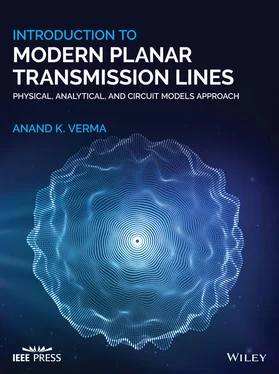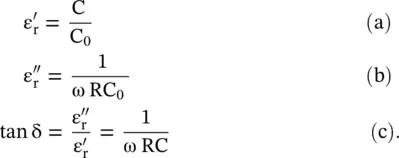Anand K. Verma - Introduction To Modern Planar Transmission Lines
Здесь есть возможность читать онлайн «Anand K. Verma - Introduction To Modern Planar Transmission Lines» — ознакомительный отрывок электронной книги совершенно бесплатно, а после прочтения отрывка купить полную версию. В некоторых случаях можно слушать аудио, скачать через торрент в формате fb2 и присутствует краткое содержание. Жанр: unrecognised, на английском языке. Описание произведения, (предисловие) а так же отзывы посетителей доступны на портале библиотеки ЛибКат.
- Название:Introduction To Modern Planar Transmission Lines
- Автор:
- Жанр:
- Год:неизвестен
- ISBN:нет данных
- Рейтинг книги:4 / 5. Голосов: 1
-
Избранное:Добавить в избранное
- Отзывы:
-
Ваша оценка:
Introduction To Modern Planar Transmission Lines: краткое содержание, описание и аннотация
Предлагаем к чтению аннотацию, описание, краткое содержание или предисловие (зависит от того, что написал сам автор книги «Introduction To Modern Planar Transmission Lines»). Если вы не нашли необходимую информацию о книге — напишите в комментариях, мы постараемся отыскать её.
rovides a comprehensive discussion of planar transmission lines and their applications, focusing on physical understanding, analytical approach, and circuit models
Planar transmission lines form the core of the modern high-frequency communication, computer, and other related technology. This advanced text gives a complete overview of the technology and acts as a comprehensive tool for radio frequency (RF) engineers that reflects a linear discussion of the subject from fundamentals to more complex arguments.
Introduction to Modern Planar Transmission Lines: Physical, Analytical, and Circuit Models Approach Emphasizes modeling using physical concepts, circuit-models, closed-form expressions, and full derivation of a large number of expressions Explains advanced mathematical treatment, such as the variation method, conformal mapping method, and SDA Connects each section of the text with forward and backward cross-referencing to aid in personalized self-study
is an ideal book for senior undergraduate and graduate students of the subject. It will also appeal to new researchers with the inter-disciplinary background, as well as to engineers and professionals in industries utilizing RF/microwave technologies.




 , tanδ = 0. In Fig. (4.6c), the angle θ is the power‐factor angle . On comparing equations (4.3.2)and (4.3.3), an equivalence is obtained between the lossy dielectric medium and a lossy capacitor
, tanδ = 0. In Fig. (4.6c), the angle θ is the power‐factor angle . On comparing equations (4.3.2)and (4.3.3), an equivalence is obtained between the lossy dielectric medium and a lossy capacitor


 is frequency independent, whereas the imaginary part of the permittivity
is frequency independent, whereas the imaginary part of the permittivity  decreases hyperbolically with frequency. Some dielectric materials may not exhibit this kind of frequency response. More realistic circuit models may be needed for such a dielectric medium. Chapter 6discusses a few more circuit models of the dielectric media.
decreases hyperbolically with frequency. Some dielectric materials may not exhibit this kind of frequency response. More realistic circuit models may be needed for such a dielectric medium. Chapter 6discusses a few more circuit models of the dielectric media. arises due to the damping of oscillation during the polarization process of a dielectric material, under the influence of an externally applied AC electric field discussed in chapter 6. However, it is difficult to distinguish between two sources of the dielectric loss; the contribution of the free charge carriers ( conduction current ) and the contribution of the dielectric polarization ( polarization current ). Therefore, both could be grouped in the total loss‐tangent.
arises due to the damping of oscillation during the polarization process of a dielectric material, under the influence of an externally applied AC electric field discussed in chapter 6. However, it is difficult to distinguish between two sources of the dielectric loss; the contribution of the free charge carriers ( conduction current ) and the contribution of the dielectric polarization ( polarization current ). Therefore, both could be grouped in the total loss‐tangent.



 of lossy dielectrics, due to the combined effect of polarization and finite conductivity, is
of lossy dielectrics, due to the combined effect of polarization and finite conductivity, is
 . Using the expression
. Using the expression  and equation (4.3.9), the complex equivalent conductivity is expressed as follows:
and equation (4.3.9), the complex equivalent conductivity is expressed as follows:











